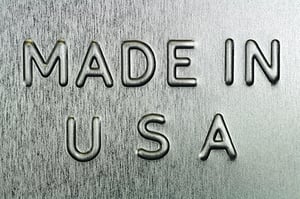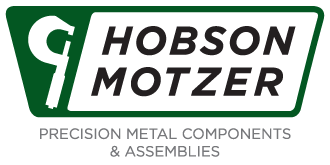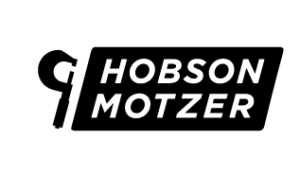It’s Not Only Timely, It’s Costly if You Don’t
It’s easy to write about reshoring in the middle of a global pandemic—it’s topical, and speaks to the sanctity of our nation’s supply of critical goods that can and should absolutely be made here so we can effectively deal with any situation within our own borders. But there is a much larger conversation that has been under discussion—and in action—for some time now.
Over the past several years a fair number of goods, previously sourced  offshore, have made their way back into U.S. manufacturing companies. This has been a growing trend in the U.S. as an increasing number of OEMs are looking at the math and recognizing that it doesn’t quite deliver the value that it used to. Whether finished goods, sub-assemblies, or component parts, U.S. manufacturers have enjoyed a boost from reshoring in recent years.
offshore, have made their way back into U.S. manufacturing companies. This has been a growing trend in the U.S. as an increasing number of OEMs are looking at the math and recognizing that it doesn’t quite deliver the value that it used to. Whether finished goods, sub-assemblies, or component parts, U.S. manufacturers have enjoyed a boost from reshoring in recent years.
Sourcing organizations have become very effective at building sophisticated supply chains that deal with variables like cultural challenges, currency fluctuations, long lead times, and more predictable interruptions, such as Chinese New Year. Less predictable and packing more of an impact, however, are geopolitical influences, such as tariffs and trade wars and natural disasters. These not only impact trade, they can be devastating events that cause supply interruptions, shortages, and stock-outs that really get the meter running on the cost side.
Hard Lessons Learned
Some might say it’s timely—and some—not timely enough. The COVID-19 pandemic is teaching us many hard lessons. Not the least of which is the importance of a stronger domestic manufacturing base, particularly when it comes to sourcing critical goods and components. The United States has an incredible manufacturing base full of talent, technology, and ingenuity. This has been evidenced by the manufacturing community’s response to the need for critical medical equipment—ventilators, masks, and other PPE—much of which is sourced off shore, is unavailable, or is stuck in stalled supply chains.
As the country and the world works through—and begins to heal from—COVID-19, many are predicting that U.S. companies will take a harder look at their supply chains. It isn’t solely about the logistics of moving goods through the supply chain in a timely fashion, but they should challenge the math that moved production offshore in the first place, and give even deeper consideration for goods and components deemed critical to the ability to respond to domestic needs in a crisis.
Total Landed Cost
The longstanding benchmark for evaluating the benefit of an offshore supply chain is the “total landed cost.” Simply put: it’s the sum of all costs associated with making and delivering products to the point where they produce revenue. The underpinning of the shift back to U.S. manufacturers in recent years has been a closer examination of that math, and increasingly, the risks associated with offshore supply.
More than ever, the reshoring “trend” is a flashing neon sign that says U.S.manufacturers are open for business. When you factor in the everyday challenges of an offshore supply chain, and the resources to maintain it, and worse, the cost of interruption—it raises more than an eyebrow. It, in fact, raises your total cost—and exponentially.
Let’s look at this in real-time circumstance. In the case of component-level items, stopped production due to a supply delay on a critical part to arrive causes productivity losses that cannot be recouped; they cause delays in delivering your products to market, and drive customers to your competitors. The next step is for companies to pull out all the stops to avoid a stock-out: dedicated land transport, express shipment, airfreight, etc.
The domino effect escalates time, resources, and, yup, costs. One of the unspoken consequences is the liability your company faces with the loss in confidence and trust your customers have in your ability to deliver, which can erode your relationship. Yet another intangible and potentially devastating cost.
Reshoring Checklist
Here’s a quick rundown of the variables that should be part of your company’s reshoring assessment. Topping the list is revisiting the math, with a number of angles—internal and external—to explore. Then you need to apply due diligence to vetting U.S. manufacturers on a number of items.
- Research and Evaluate U.S. Manufacturers on:
- Quality
- Cost
- Service Level

- Technology
- Talent
- Innovation
- Infrastructure
- Automation
- QMS/Standards
- Engineering
- Vertical Integration
- Market Proximity
- Stability
- Ease of Doing Business
Historic Juncture
It’s not an overstatement to say that we’re living through a historic time in our history. One that is having profound effect on all aspects of our lives. U.S. manufacturers—who are usually well-removed from the average consumer’s mindset—find themselves front and center, at an intersection with a stalled global supply chain and everyday Americans who are deeply concerned with having access to products that will help keep themselves and their loved ones safe, healthy, and happy. It is overlap never seen in modern times. Prior to the current global upheaval of our lives, we went about our days not giving a second thought to the ease at which we can purchase items to make our lives easier or seek the services that keep us healthy. Consumers are more aware than ever of the connection between the everyday goods that provide them convenience, lifestyle freedom, and optimal health.
As manufacturers, we have a responsibility to our own companies, employees, supply chain partners—and ultimately, everyday consumers—to reassess how to mitigate the risks associated with unforeseeable circumstances that threaten to interrupt production. As such, many companies are thinking about reshoring manufacturing. We’ve compiled a Reshoring Checklist to help you wade through the variables that influence reshoring. Deeper exploration of these elements should be part of your company’s reshoring assessment. We also provide a section that discusses a next-steps strategy once you’ve satisfied your checklist and scrutinized your manufacturing partner options.
Download our Reshoring Checklist now for more insights about each element you should be considering.










